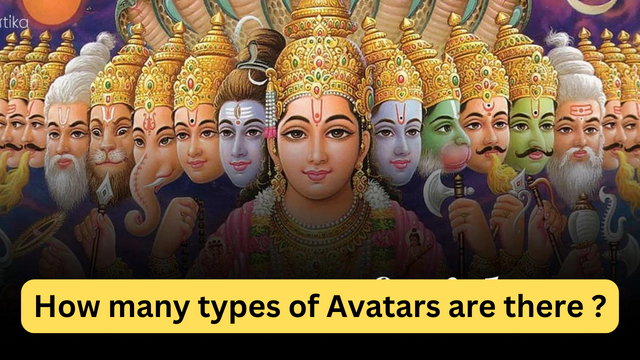We all know about various Avatars of God. It has been said about incarnation – Avatarati iti avatarah. That is, the one who incarnates, meaning the one who comes from above (divine world) to below (earthly world), he is incarnation. A detailed description of the types of incarnations is also given in the Puranas.
Purusha Avatar
When God incarnates in the form of a human being then it is called Purusha Avatar. However, it is specifically used for the incarnations of Lord Vishnu who is actually an extension of Mahavishnu.
Vimavatar
When God himself comes then he is called Vimavatar. There are two types of dimensions:
- Sakshat Avatar: This is the Sakshat form of God, that is, God incarnates with all his abilities.
- Avesh Avatar: The powers of God are also inherent in Avesh Avatar but not as clearly as in Sakshat Avatar. There are also two types of charge avatars:
- Shakti avshesh : Only the power of God comes in this incarnation.
- Rup avshesh : In this incarnation God himself comes in the form of a living being.
Ansavatar
It is also called Kalaavatar. God’s incarnation on earth can happen only with a maximum of 16 arts. So when they incarnate with 1-16 Kalas, they are called Ansavatar or Kalavatar. Like Mahavir Hanuman is called the incarnation of Lord Shankar.
Purnavatara
Those who incarnate with all the 16 arts of God are called Purnavatara. In the Dashavatar of Shri Hari, only Shri Krishna incarnates with all those 16 arts, that is why he is called Purnavatar. Due to being equipped with all the 16 arts, Shri Krishna is considered to be the most equivalent of Lord Vishnu.
Vibhuti Avatar: When an avatar is less than 1 Kala then it is called Vibhuti Avatar.
Chaturvyuh Avatar
This is a special incarnation which does not happen every time. In this, God incarnates in 4 different forms in the same period of time from his different parts, which together achieve a particular objective. Like Shriram, Bharat, Lakshman and Shatrughan are the Chaturvyuh forms of Ramavatar. Similarly, Shri Krishna, Balram, Pradyumna and Aniruddha are the Chaturvyuh forms of Krishna avatar.
Gunavatar
It is based on qualities. Vishnu represents Satguna, Brahma represents Rajoguna and Shankar represents Tamoguna. Similarly, different incarnations also have different qualities, like in Dashavatar, Shri Ram represents Satoguna, Shri Krishna represents Rajoguna and Parashuram represents Tamoguna.
Kalpavatara
These incarnations occur once in a Kalpa. It is said that from Matsya to Shri Krishna, these 9 incarnations of Shri Hari are Kalpavatara. That means they incarnate only once in a Kalpa.
Manvantravatar
The incarnations that incarnate once in a Manvantara are called Manvantravatar. These incarnations are considered to be the form of Supreme Father Brahma. That is, in one Kalpa, there are 14 Manvantravatars of Brahma, who are also called Manu in common language.
Yugavatar
They incarnate in every era. Among Shri Hari’s Dashavatar, Lord Kalki is the only Yugavatar, that is, He incarnates once in every Yuga or 1000 times in one Kalpa.
Leelaavatar
The 24 incarnations of Lord Vishnu are called Leelaavatar. These are – Sankadi Rishi, Varaha, Narada, Hans, Nar-Narayan, Kapil, Dattatreya, Yagya, Rishabhdev, Prithu, Matsya, Kurma, Dhanvantari, Mohini, Hayagriva, Nrisimha, Vaman, Gajendra Moksha, Parashuram, Vedvyas, Ram, Krishna. , Venkateswara and Kalki.
Archavatar
Here God does not incarnate himself but incarnates in the form of a symbol or idol.
Naimittik Avtaar
Such incarnations of God who incarnate occasionally for a specific purpose. Lilavatars are sometimes also counted among Naimittik Avatars.
Nityavatar
Cosmic incarnation. The most common and frequently occurring incarnation of God.
